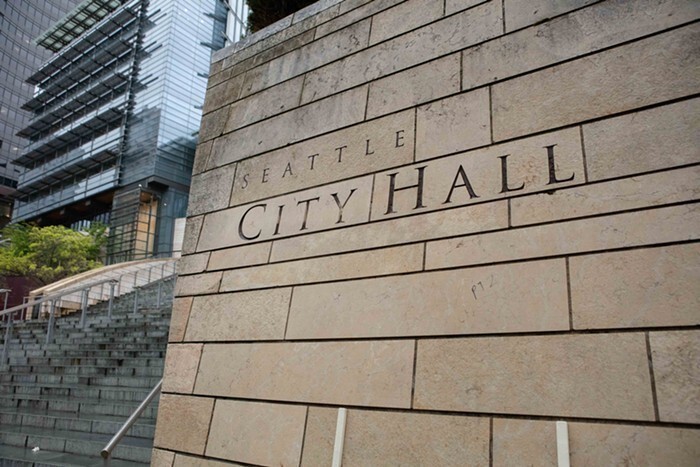
Yes, Seattle had city council districts a long time ago, but too long ago for most of us to remember. That means this new system might as well be brand new, and it was a complete shit show. Seven new districts, 47 candidates, passive aggressive chocolate-covered fruit deliveries.
Last night, it all came to a head and the results proved that the new districts system doesn’t appear to be doing what some people feared (or hoped) it might be doing: empowering Seattle’s NIMBYs.
Tony Provine, the District 4 candidate who used a bulldozer on his campaign mailers to illustrate how he felt about the city’s housing affordability committee’s recommendations to increase density, came in fourth. (Which means he won't be going through to the November general election.) Incumbent Jean Godden, who was also skeptical of new density, is currently trailing behind density-friendly challengers Rob Johnson and Michael Maddux. (Let me repeat: Incumbent Jean Godden looks like she may not make it through the primary to the general election.)
In the citywide races, slow growth neighborhood activist Bill Bradburd got just 15 percent of the vote to Lorena González's 64 percent in the race for citywide Position 9. John Persak, who ran against incumbent Tim Burgess for citywide Position 8 and opposed more density in single family zones, got a dismal seven percent of the vote.
The best growth-averse showing was Catherine Weatbrook, who’s challenging incumbent Mike O’Brien in District 6, and even she got just 22 percent of the vote. (Another O’Brien challenger, Jon Lisbin, got 14 percent. Theoretically, if all those voters are dissatisfied with O’Brien and move to Weatbrook in the general election, that’s a hefty 36 percent, but still good news for O’Brien.)
So all in all, the new system clearly isn't empowering NIMBY's as much as feared. But it did foster plenty of far left anti-developer talk and angst from tenants facing rent increases. That materialized in an impressive win for incumbent Kshama Sawant (49.9 percent of the vote, compared to just 35 percent in her 2013 primary against then-incumbent Richard Conlin). It’s also likely what propelled Jon Grant, former head of the state Tenants Union and challenger to incumbent Tim Burgess, past Burgess’s other main challenger, John Roderick (Grant got 28 percent of the vote and Roderick 16 percent). Burgess, the current council president, received 48 percent of the vote—not far from a majority, but still a number that Grant and his supporters will capitalize on to show that Burgess’s support isn’t as strong as some might have thought. In fact, they are sure to point out, it’s even lower than support for the supposedly “divisive” Sawant. (Bradburd, in citywide Position 9, also has plenty of anti-developer sentiment in his message, but has won fewer major endorsements.)
The apparent moral of this story: citywide, voters want to hear a lot less from NIMBYs and a lot more about how to curb the surging costs of living in Seattle.


















